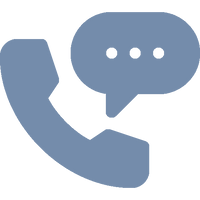📌 Quick Summary
1-Sentence Answer:
International patent protection is like getting your invention a global passport—ensuring your startup or side hustle is safe no matter where it travels.
The Article Overview:
This article unpacks the essentials of international patent protection, from PCT and Paris Convention basics to the real-world benefits and challenges. You’ll learn how startups and side hustles can secure global IP rights, avoid copycats abroad, and build a competitive edge worldwide.
❓ Common Questions & Answers
Q1: Why do I need international patents if I already have a U.S. patent?
A U.S. patent only covers the U.S. Without international protection, competitors abroad can copy and profit from your idea without legal consequences.
Q2: What’s the Patent Cooperation Treaty (PCT) and why does it matter?
The PCT is like a global filing shortcut—it lets you apply once, then extend protection to multiple countries without starting from scratch.
Q3: Are patents really worth it for side hustles?
Yes! Even side projects can get copied fast in global markets. Patents give your hustle credibility and help attract licensing or investor interest.
Q4: How expensive is international patent protection?
It varies widely. Filing fees, translations, and legal costs add up, but the expense is often justified if your invention has worldwide market potential.
Q5: Can I enforce my rights if someone abroad copies my idea?
Yes—but only if you’ve secured protection in that region. Otherwise, you’ll be playing whack-a-mole with no legal hammer.
📜 Step-by-Step Guide
-
Start with a local patent – Secure protection in your home country first. This anchors your claim before you expand globally.
-
Use the Paris Convention – File abroad within 12 months of your first filing to keep your original filing date priority.
-
Leverage the PCT – File one international application to simplify entry into over 150 countries.
-
Pick target markets – Don’t waste money everywhere; focus on regions where you’ll sell, license, or manufacture.
-
Hire an expert – International laws differ, so a skilled patent attorney is your best travel agent for global IP.

📖 Historical Context
Patents are not a modern invention. The Venetian Republic issued the first known patent statute in 1474, protecting inventors and encouraging innovation. By the Industrial Revolution, patents had become a powerful tool, fueling competition and protecting breakthroughs in machinery, textiles, and chemistry.
Fast-forward to the 20th century, when global trade demanded broader protections. Treaties like the Paris Convention (1883) and the Patent Cooperation Treaty (1970) were established to unify the system and reduce chaos for inventors seeking global coverage.
Today, the world is more interconnected than ever. A startup app developer in California can find their innovation copied in Shenzhen within weeks. Without international protections, defending creativity in a borderless digital age would be almost impossible.
🏢 Business Competition Examples
-
Dyson vs. Copycats – Dyson spent years fighting knockoff vacuum designs, showing why securing patents across multiple markets was essential to its brand survival.
-
Apple vs. Samsung – The global smartphone patent battles highlighted how tech giants use international IP laws as competitive weapons.
-
Tesla’s Open Patents – Elon Musk flipped the script by making many patents open, but Tesla’s core international filings remain locked down.
-
LEGO vs. Block Builders – LEGO aggressively enforces its international design patents to protect its iconic bricks from imitators worldwide.
💬 Discussion Section
Think of patents as a travel visa for your invention. You wouldn’t expect a U.S. driver’s license to work in Germany, and the same goes for patents. Your rights stop at the border unless you’ve planned ahead.
For startups, this often becomes a game of chess. Filing patents everywhere is prohibitively expensive, so strategy is key. Should you protect your invention in manufacturing hubs like China? In lucrative consumer markets like the EU? Or in emerging markets where growth could explode in five years?
International patents also aren’t just about protection—they’re about leverage. Investors and potential partners view global patents as a sign of credibility. A well-filed international patent portfolio can make a startup more attractive in mergers, acquisitions, or licensing deals.
However, with opportunity comes complexity. Every country has unique rules, fees, and enforcement quirks. Translation issues alone can sink a patent application. And even after you secure protection, enforcement can be slow, expensive, and frustrating.
Despite these challenges, not filing can be even riskier. In today’s fast-moving markets, unprotected ideas spread like wildfire. Competitors won’t hesitate to capitalize on your innovation if you leave the doors wide open. International patents, while costly, are the insurance policy that keeps your IP safe when your business goes global.

⚖️ The Debate
Pro-International Patents:
Supporters argue patents are crucial for startups and hustlers. They prevent theft, create licensing opportunities, attract investors, and ensure fair competition. In a global market, failing to protect an idea internationally is like leaving your house unlocked in a crowded city.
Anti-International Patents:
Critics counter that patents are expensive, slow, and hard to enforce. For many startups, the money spent on international filings might be better invested in speed-to-market, brand building, or constant innovation. They argue the best defense is agility, not bureaucracy.
✅ Key Takeaways
-
A patent in one country does not protect you worldwide.
-
The PCT and Paris Convention streamline the process.
-
Focus filings on key markets, not everywhere.
-
Patents boost credibility, value, and investor confidence.
-
Enforcement abroad requires having patents in place first.
⚠️ Potential Business Hazards
-
Cost Overload – Filing globally without strategy drains startup funds.
-
Lost Priority – Missing the 12-month Paris Convention deadline erases protection.
-
Translation Errors – Poor translations can invalidate applications.
-
Enforcement Gaps – Some jurisdictions have weak enforcement even if you hold patents.
❌ Myths & Misconceptions
-
“My U.S. patent protects me everywhere.” False—patents are territorial.
-
“Only big companies need patents.” Small startups and side hustles are just as vulnerable.
-
“Patents guarantee profits.” No—they’re protection, not a business plan.
-
“I can file later when I’m successful.” Wrong—delays can let competitors beat you abroad.
📚 Book & Podcast Recommendations
-
Patent It Yourself by David Pressman – https://www.nolo.com/products/patent-it-yourself-paty.html
-
Innovation and Its Enemies by Calestous Juma – https://global.oup.com/academic/product/innovation-and-its-enemies-9780190467036
-
IP Fridays Podcast – https://www.ipfridays.com
-
StartUp Podcast by Gimlet – https://gimletmedia.com/shows/startup
⚖️ Legal Cases
-
Apple Inc. v. Samsung Electronics (2011–2018) – https://www.supremecourt.gov/opinions/16pdf/15-777_7lho.pdf
A landmark design patent case highlighting global enforcement battles. -
Dyson Ltd v. Vax Ltd (2011, UK) – https://www.bailii.org/ew/cases/EWCA/Civ/2011/1206.html
Showed the importance of defending patents against design imitators. -
LEGO Juris A/S v. OHIM (2010, EU) – https://curia.europa.eu/juris/document/document.jsf?docid=82981&doclang=EN
Confirmed the iconic LEGO brick’s protection under EU trademark and design law.
📣 Expert Invitation
Want to take your IP global but not sure where to start? Connect with seasoned patent experts at Inventive Unicorn—they’ll help you chart the smoothest route for your invention’s world tour.

🔚 Wrap-Up Conclusion
International patent protection may sound intimidating, but think of it as a travel plan for your invention. With the right documents, strategy, and guides, your intellectual property can explore new markets safely. Whether you’re building the next big startup or nurturing a side hustle, securing a global passport for your idea could be the smartest journey you ever book.











